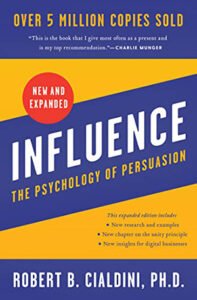|

|
Influence:
Observers trying to decide what people are like look closely at their actions. People also use this evidence – their own behavior – to decide what they are like…
|
314 |
|

|
Influence:
…something special happens when people put their commitments on paper: they live up to what they write down.
|
320 |
|
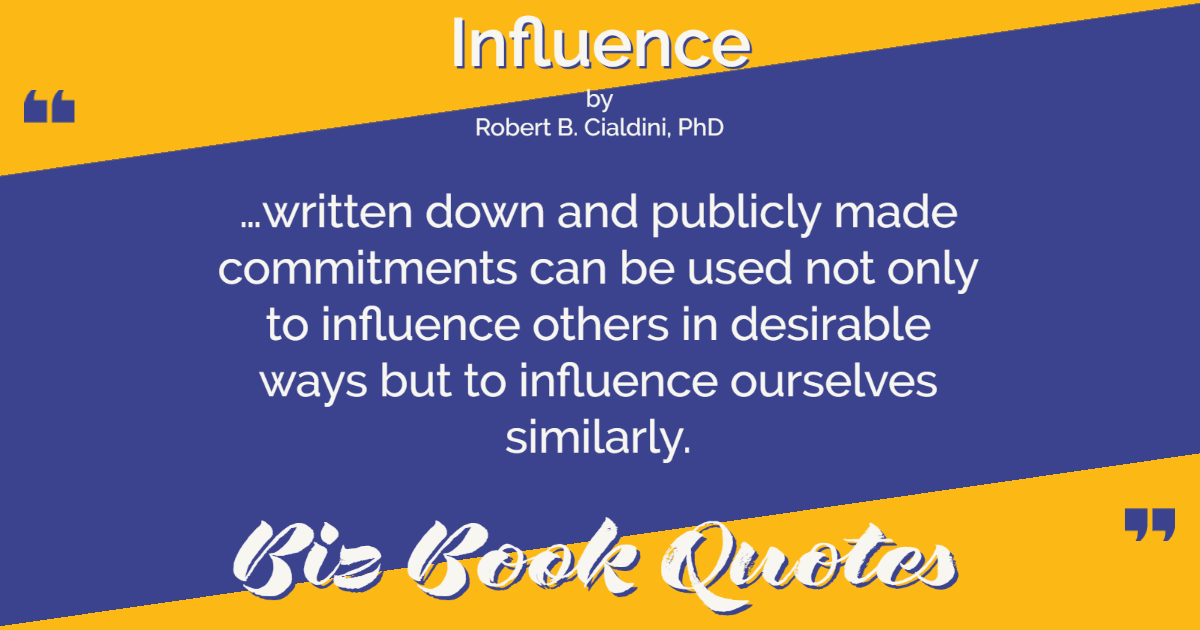
|
Influence:
…written down and publicly made commitments can be used not only to influence others in desirable ways but to influence ourselves similarly.
|
322 |
|

|
Influence:
Whenever one takes a stand visible to others, there arises a drive to maintain that stand in order to look like a consistent person.
|
322 |
|
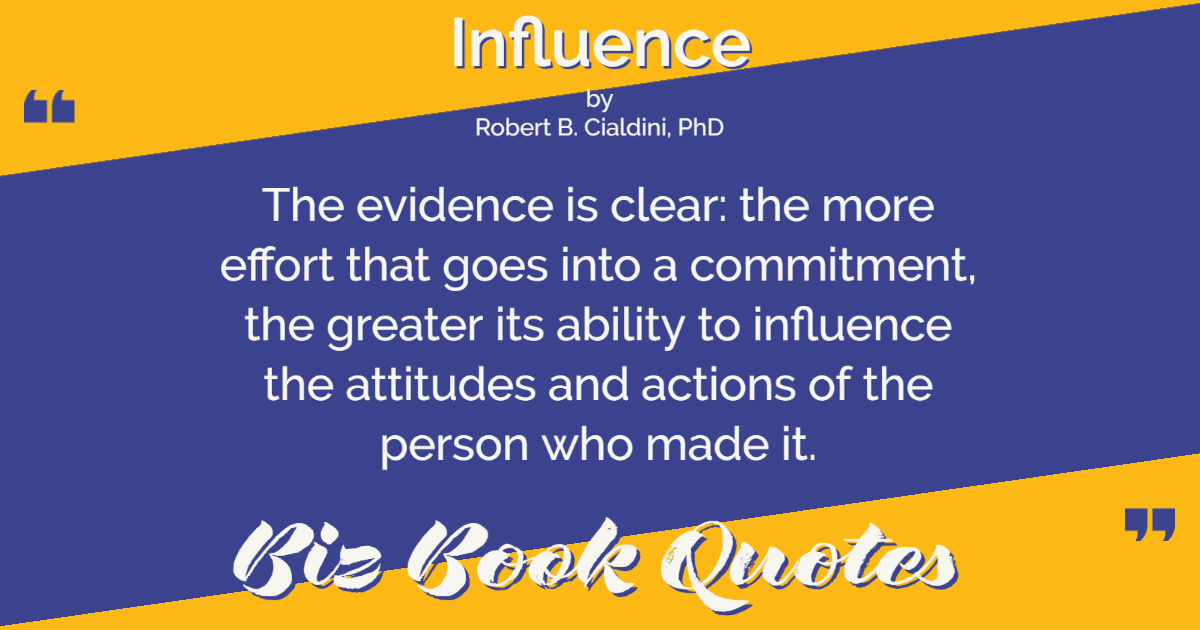
|
Influence:
The evidence is clear: the more effort that goes into a commitment, the greater its ability to influence the attitudes and actions of the person who made it.
|
327 |
|
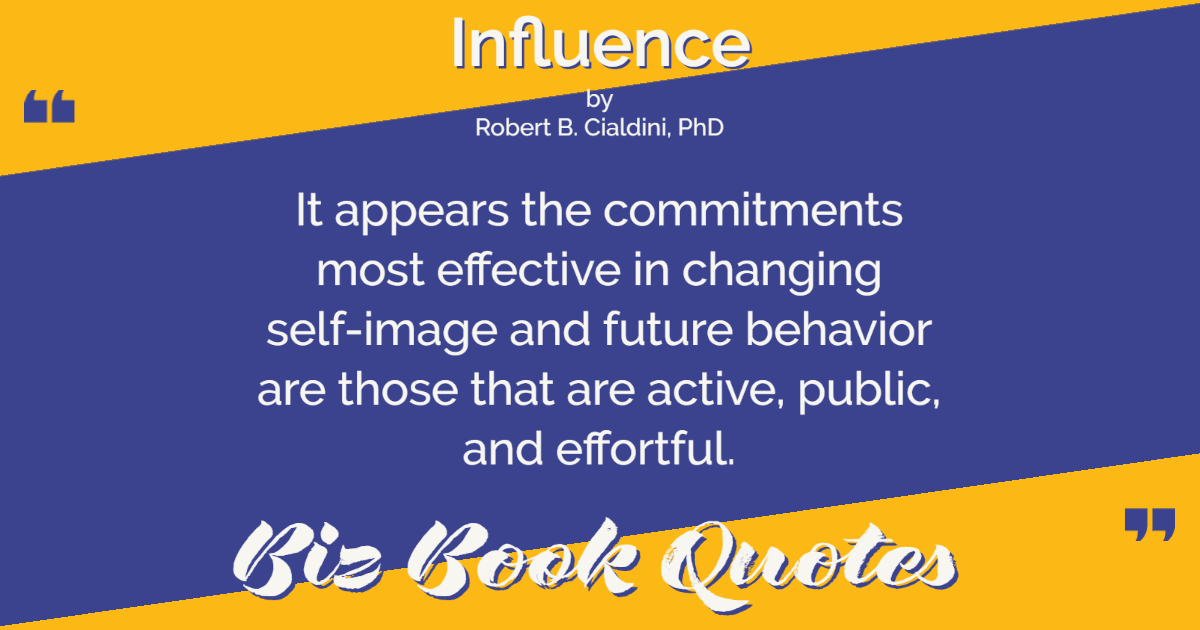
|
Influence:
It appears the commitments most effective in changing self-image and future behavior are those that are active, public, and effortful.
|
335 |
|

|
Influence:
…a strong threat… may motivate immediate compliance, but it is unlikely to produce long-term commitment.
|
336 |
|
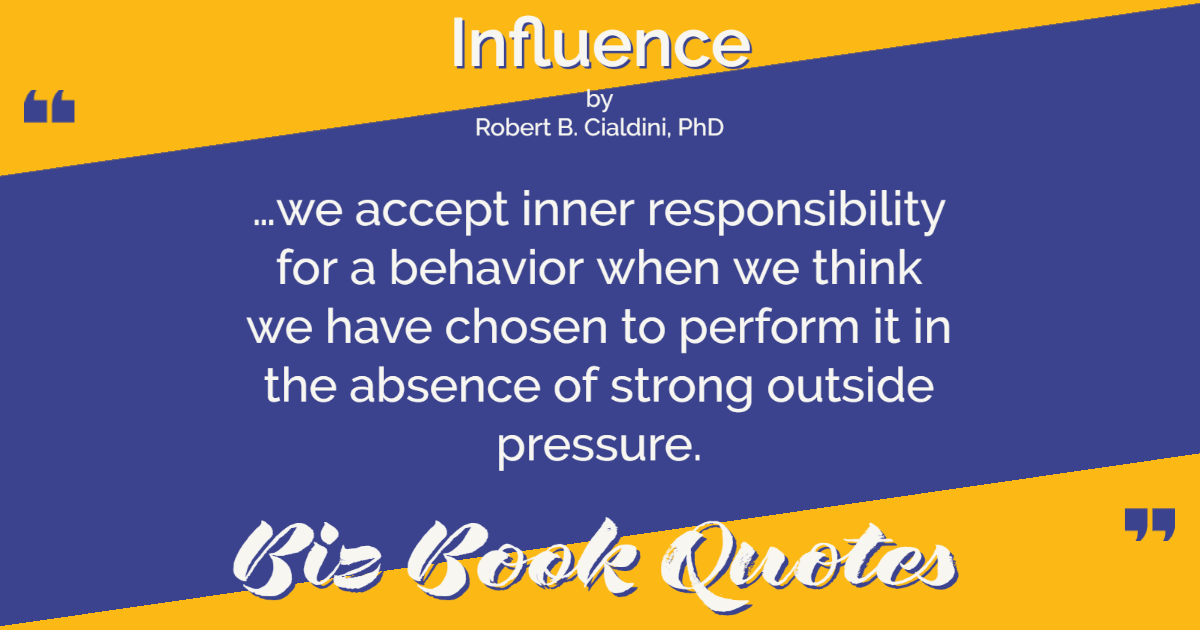
|
Influence:
…we accept inner responsibility for a behavior when we think we have chosen to perform it in the absence of strong outside pressure.
|
336 |
|
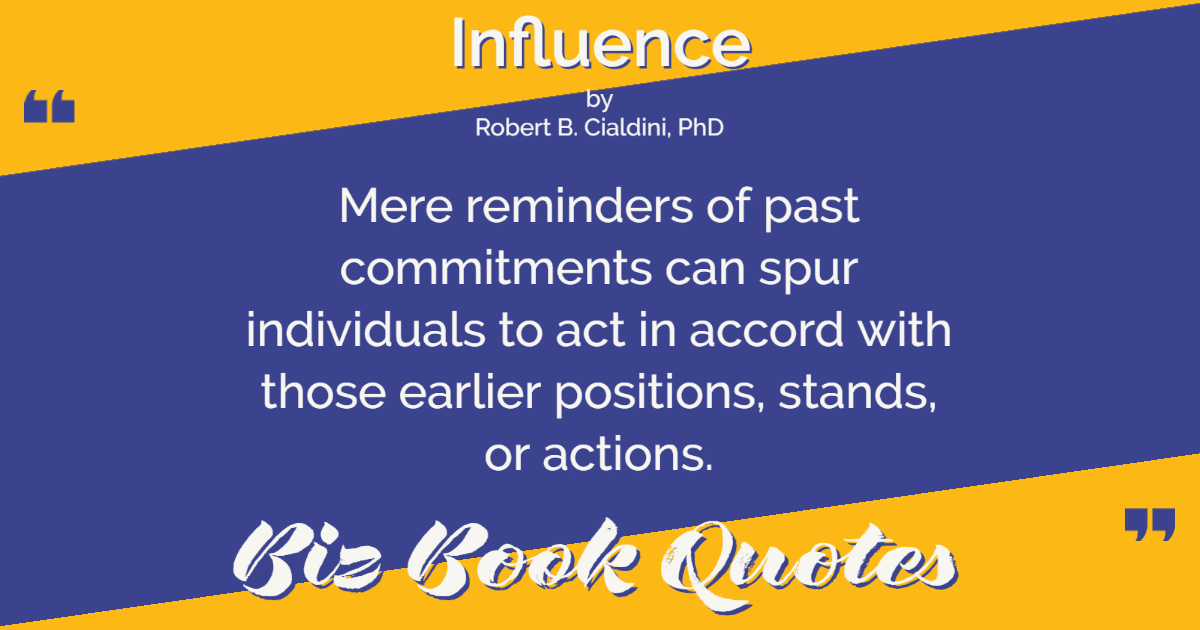
|
Influence:
Mere reminders of past commitments can spur individuals to act in accord with those earlier positions, stands, or actions.
|
347 |
|
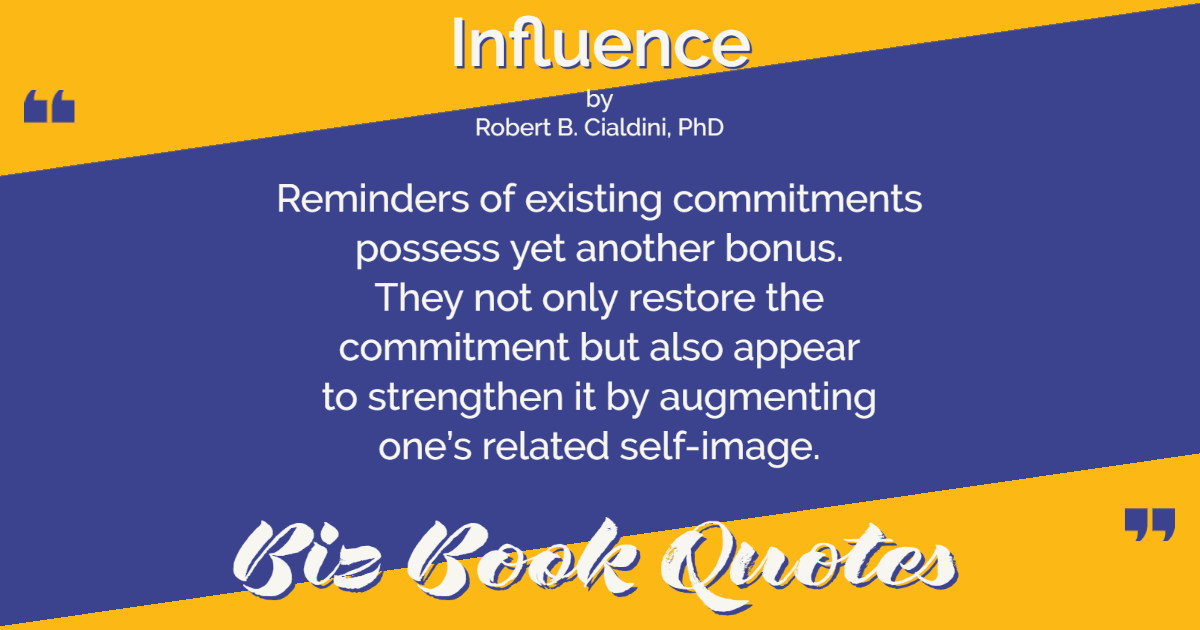
|
Influence:
Reminders of existing commitments possess yet another bonus. They not only restore the commitment but also appear to strengthen it by augmenting one’s related self-image.
|
349 |
